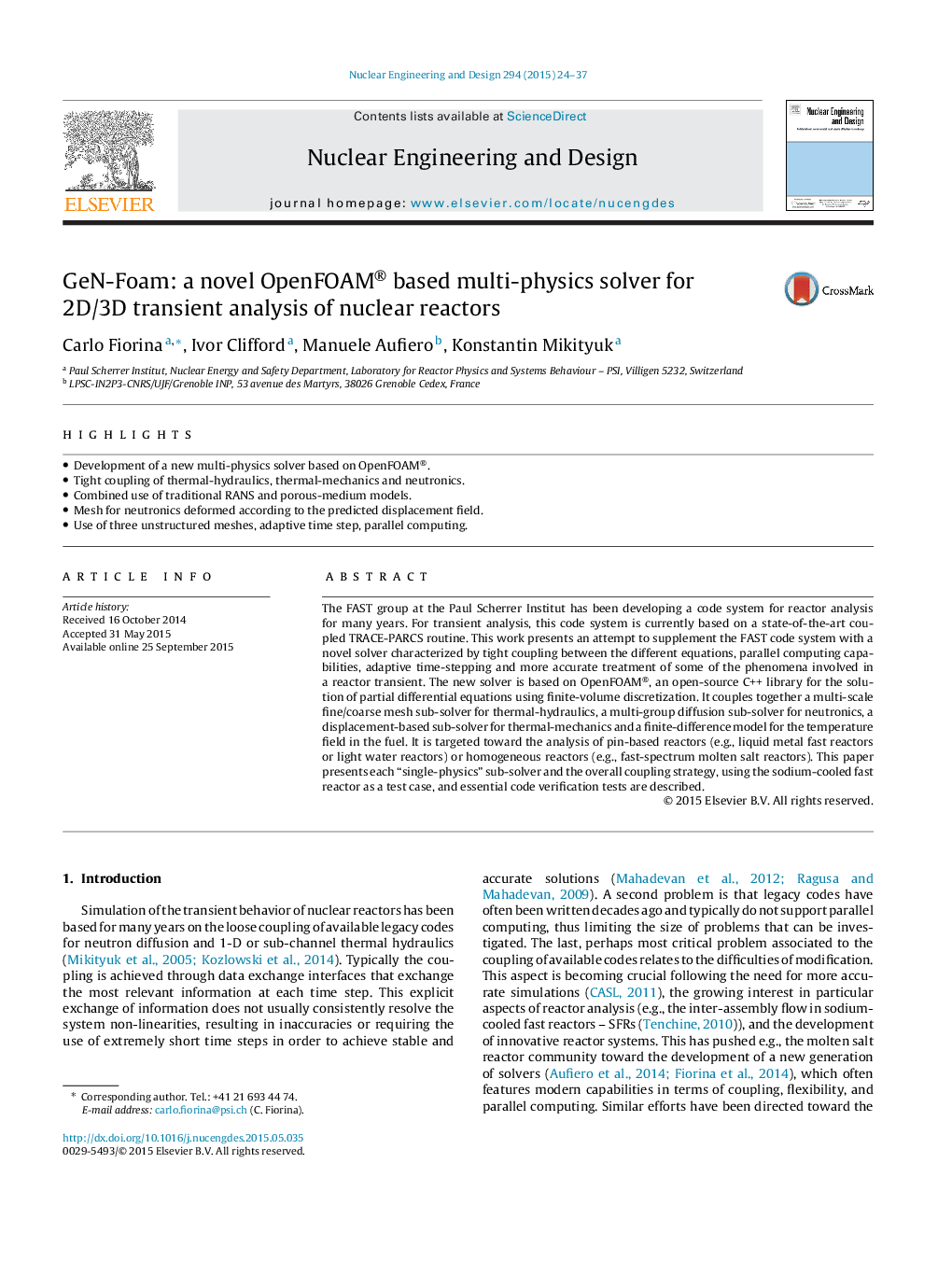| کد مقاله | کد نشریه | سال انتشار | مقاله انگلیسی | نسخه تمام متن |
|---|---|---|---|---|
| 296039 | 511703 | 2015 | 14 صفحه PDF | دانلود رایگان |

• Development of a new multi-physics solver based on OpenFOAM®.
• Tight coupling of thermal-hydraulics, thermal-mechanics and neutronics.
• Combined use of traditional RANS and porous-medium models.
• Mesh for neutronics deformed according to the predicted displacement field.
• Use of three unstructured meshes, adaptive time step, parallel computing.
The FAST group at the Paul Scherrer Institut has been developing a code system for reactor analysis for many years. For transient analysis, this code system is currently based on a state-of-the-art coupled TRACE-PARCS routine. This work presents an attempt to supplement the FAST code system with a novel solver characterized by tight coupling between the different equations, parallel computing capabilities, adaptive time-stepping and more accurate treatment of some of the phenomena involved in a reactor transient. The new solver is based on OpenFOAM®, an open-source C++ library for the solution of partial differential equations using finite-volume discretization. It couples together a multi-scale fine/coarse mesh sub-solver for thermal-hydraulics, a multi-group diffusion sub-solver for neutronics, a displacement-based sub-solver for thermal-mechanics and a finite-difference model for the temperature field in the fuel. It is targeted toward the analysis of pin-based reactors (e.g., liquid metal fast reactors or light water reactors) or homogeneous reactors (e.g., fast-spectrum molten salt reactors). This paper presents each “single-physics” sub-solver and the overall coupling strategy, using the sodium-cooled fast reactor as a test case, and essential code verification tests are described.
Journal: Nuclear Engineering and Design - Volume 294, 1 December 2015, Pages 24–37